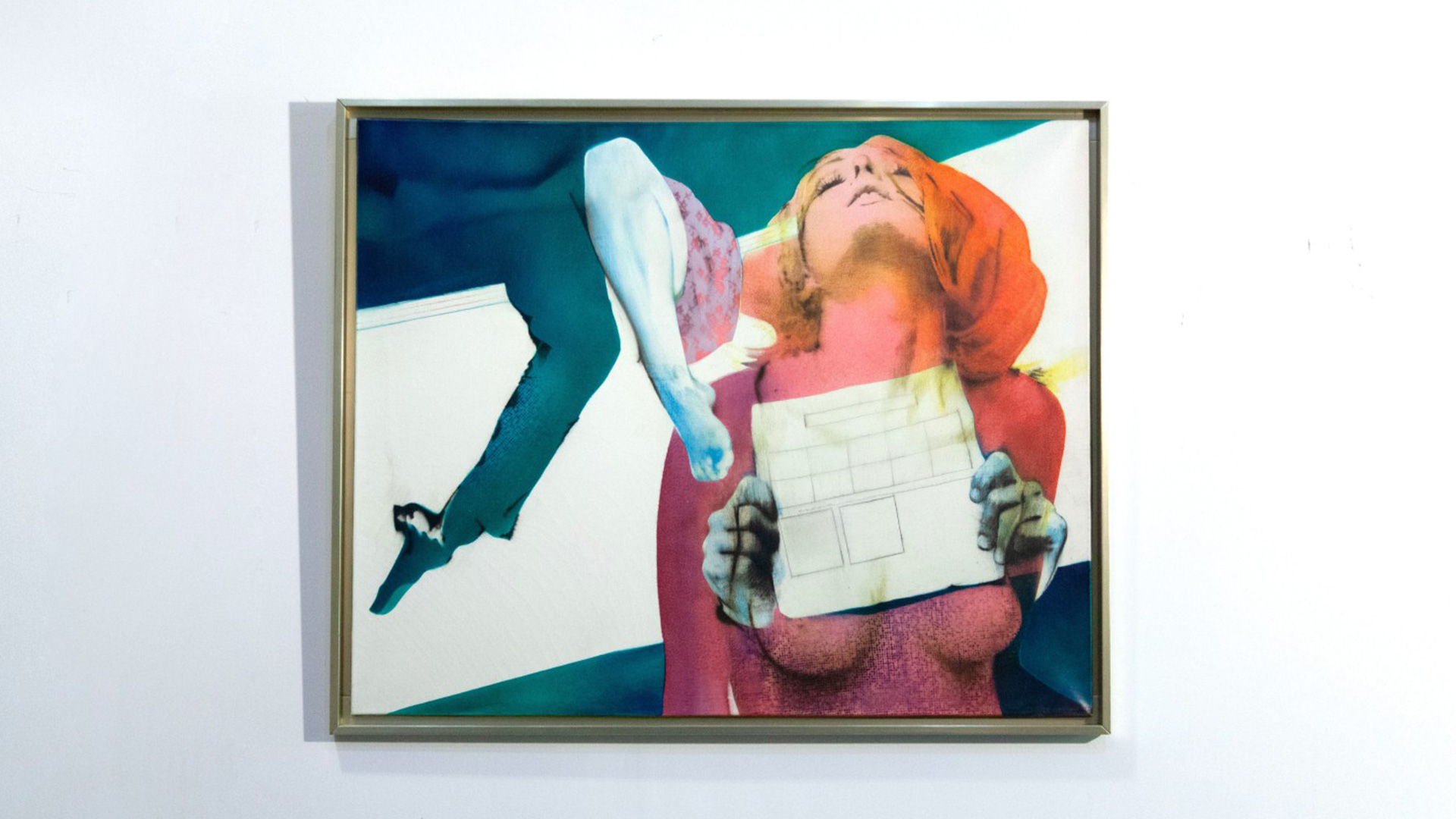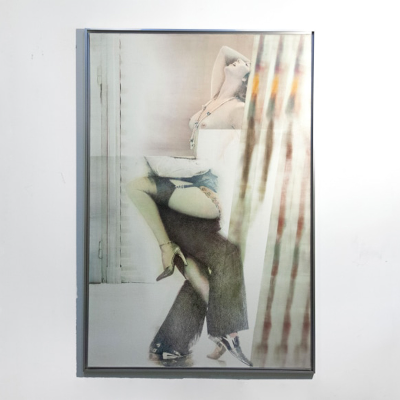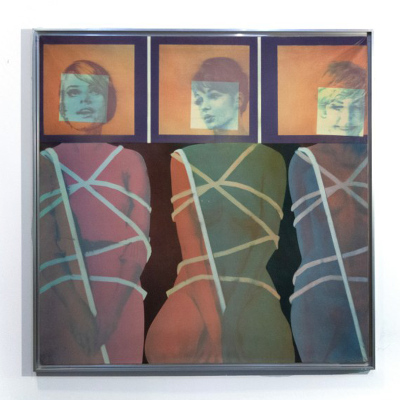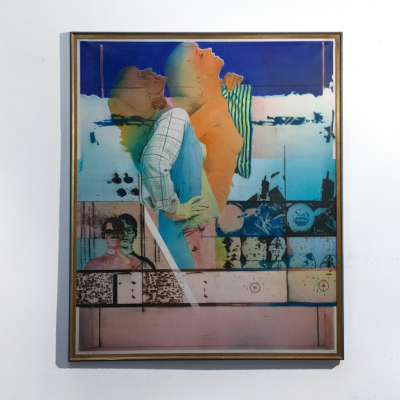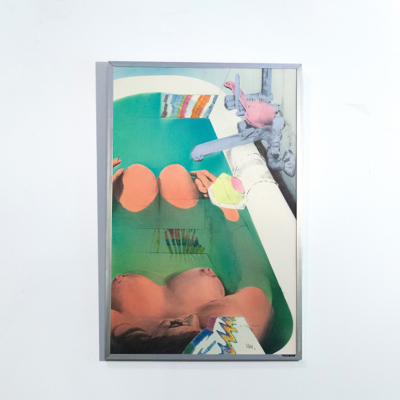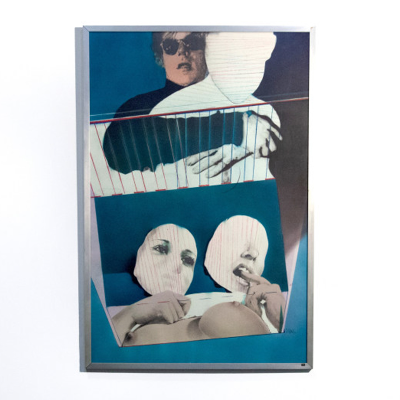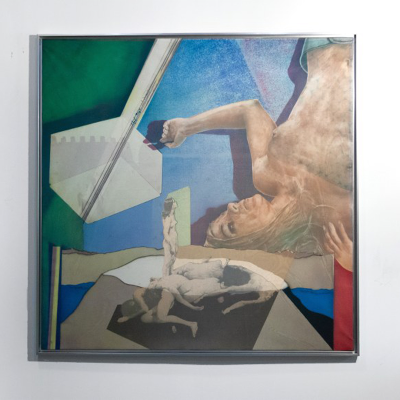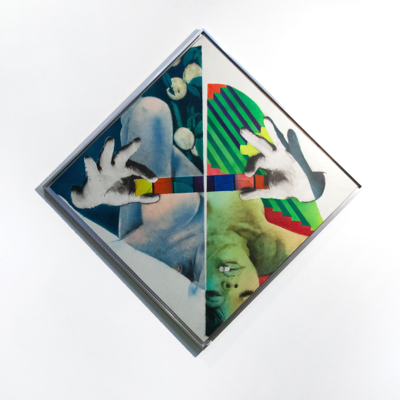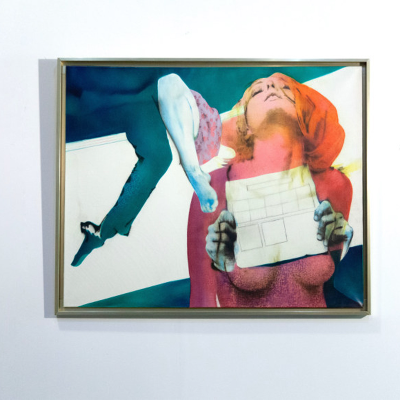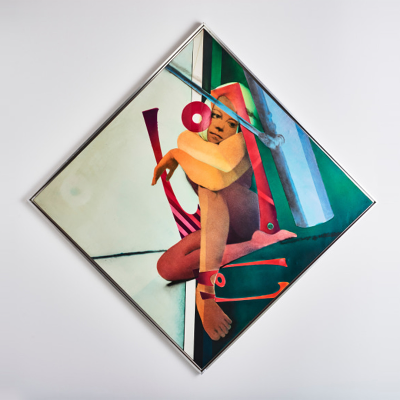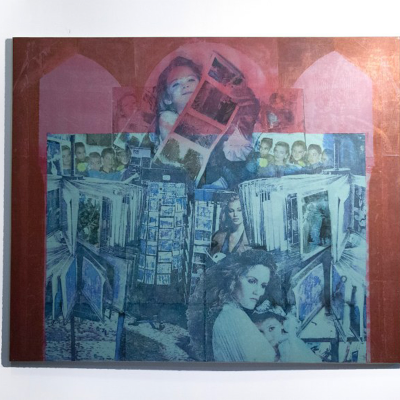In the 1970s, deep in the heady haze that lingered on like a balmy hangover after the Summer of Love, the world saw a major sex-positive shift in art on both sides of the Atlantic, particularly among society's more radical subsets.
The work of Pol Mara (Belgian, 1920 - 1998) is of particular interest. The sprightly, bespectacled artist dabbled in painting, illustration, and print-making. He had a wide array of influences from Ab-Ex, to COBRA, to lyrical abstraction— but none held his interest quite like Pop did. It was in the later half of his career (around the time he founded G-58 Hessenhuis, an avant-garde collective) that he found himself deep in the world of experimental painting, on the vanguard of European Pop Art.
Born Leopold Leysen, his moniker (P. O. L. M. A. R. A.) was an acronym which stood for “Pour Oublier Laideur. Métamorphoses, Amour, Rêve, Amitié.” Translated from French to English, it reads: To forget ugliness. Metamorphosis, love, dreams, friendship. Mara did not consider the visual environment in terms of the sacred and profane— nor did he shy from eroticism.
For Mara the human body (a woman's in particular) was the ultimate subject, the utmost thing worthy of being transformed into an image. And yet, while thinkers like Andrea Dworkin are heard loud and clear, it seems that Mara's work aimed neither to be particularly feminist nor particularly misogynistic.
The images themselves are frank and can be taken at face value. Yet, as Pop Art goes, half of the content lies outside of the frame. And as Mara goes, what makes his painting so quintessentially of its time is not that he is merely playing with the pornographic— it's that he's also playing with the other white-hot libidinal desire of his time: consumerism.
Let's set the scene. Mara's Native Belgium experienced a rapid economic recovery in the aftermath of World War II and was the first European country to regain its pre-war level of output in 1947. By the time Mara hits his stride and begins producing Pop Art, it's nearly the end of Diana Vreeland's stints at Harpers and Vogue. The American Food and Drug Administration had approved the first oral contraceptive (1960); Mary Quant had just invented the miniskirt, plastic was all the rage, hairspray was boring a hole in the ozone layer, and, most importantly, the world was swept up in the roaring riptide of the Post-War consumer boom.
None of this was lost on Mara. This period, generally agreed to have lasted from 1950 through the early 70s and dubbed the "Golden Age of Capitalism," seems to be what Mara is mulling over. The painting was the perfect medium for Mara to reconcile these sprawling branches of the Zeitgeist. The most "Pop" thing about him— the appearance of his work aside— is that he's turned his paintings into self-contained objects of desire, producing images like advertisements selling nothing but themselves. Mara's work is hot. It's taboo. It's erotic. It's uncanny. He gives the eye plenty of space to travel, but there's a sense of being lost within the matrix of consumer media.
His paintings, after all, have the outward appearance of sexually-charged clippings from old print media mixed with soak-stain painting and placed under a silkscreen. Many look like clipped portions of ads fresh off of Madison Avenue— and while it's not clear what the women in them might be selling, a work like "L'Histoire d'O" could moonlight as a histrionic rendition of Anna Karina's 1959 advertisement for Palmolive soap. It's curious that did all of this primarily using oil paint and sketching by hand and included many references to his abstract period: bright, bold fields of colour, deliberate layering, and, almost invariably, a monumental scale that rivalled that of Abstract Expressionist compositions.
In 1974, when Jean-François Lyotard described the Libidinal Economy, it's easy to imagine its mechanizations expanding endlessly backwards into the flattened, forever-space of a Mara where desire does not arise from the lack of something but is a given. His work seeks to create a space in which desire is a generative force in and of itself.
It's a compelling form of rebellion— an irreverent affirmation of life and joy in the midst of one of the oddest times in history.
Read more +
Read less -







 Sign in with email
Sign in with email


